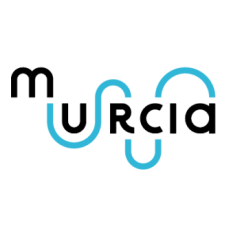
What to see in Cehegin
Church of Saint Mary Magdalene

This is one of the most characteristic buildings in the town. It is a building of great religious importance.
The origin of its construction dates from the 16th century, although it was left unfinished until the end of the 17th century, as the work was completed during the year 1698.
It has many artistic details that enrich it, but among all of them, a polychrome carving of Saint Mary Magdalene stands out.
The origin of its construction dates from the 16th century, although it was left unfinished until the end of the 17th century, as the work was completed during the year 1698.
It has many artistic details that enrich it, but among all of them, a polychrome carving of Saint Mary Magdalene stands out.
Church and Convent of Saint Stephen

This is a building complex built between the 16th and 18th centuries, made up of the Convent of Saint Stephen and the Church of Our Lady of Wonders, patroness saint of the town.
The chapel of Saint Joseph is attached to the transept of the church and, like it, is arranged in the shape of a Latin cross.
One of the most striking elements of the whole complex is the octagonal dressing room of the church, which is made entirely of polychrome wood.
The chapel of Saint Joseph is attached to the transept of the church and, like it, is arranged in the shape of a Latin cross.
One of the most striking elements of the whole complex is the octagonal dressing room of the church, which is made entirely of polychrome wood.
The convent, on the other hand, is large and located around two cloisters: one main and one secondary. The main cloister is closer to the facade of the church and houses the dependencies of the Franciscan fathers. Meanwhile, in the secondary cloister, of equal size but less showy, the rooms of the brothers were located.
It is necessary to mention that inside the convent is the staircase of the "Tota Pulchra", where it is customary to worship the patroness saint of the city. This convent currently houses the friars of the Order of Saint Francis, which makes it one of the most emblematic buildings and loved by the population.
Hermitage of the Conception
This Renaissance-style temple was built during the first half of the 16th century.
Its main construction consists of three naves, while inside it houses, built in wood, an astonishing Mudejar roof with an octagonal vault.
From the outside, one can see the open-style bell tower located on one side of its main entrance. In terms of artistic value, the altar of the Quirós and Carreño also stands out.
Its main construction consists of three naves, while inside it houses, built in wood, an astonishing Mudejar roof with an octagonal vault.
From the outside, one can see the open-style bell tower located on one side of its main entrance. In terms of artistic value, the altar of the Quirós and Carreño also stands out.
Church of the Solitude
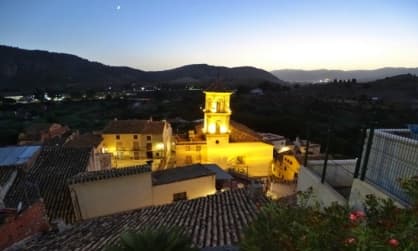
This construction is located on a small hill, and its origins date back to the 16th century, although inside it also houses an innumerable amount of works from the 17th and 18th centuries.
Its building is made up of three naves. Its amazing altarpieces stand out, along with the choir, which is supported by a jasper column. From the outside, one can see its simple facade and its bell tower, composed of two floors, dating from the year 1788.
Its building is made up of three naves. Its amazing altarpieces stand out, along with the choir, which is supported by a jasper column. From the outside, one can see its simple facade and its bell tower, composed of two floors, dating from the year 1788.
Los Fajardo Palace
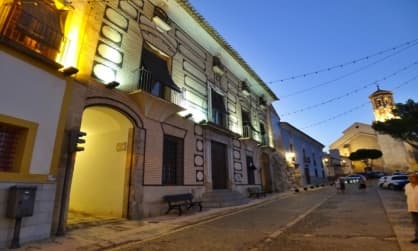
This is an old Baroque-style building from the 18th century consisting of two floors, with a striking facade made of plaster and exposed brick.
From the outside, one can see its main door, framed by pilasters on both sides, and the main balcony containing the coat of arms of the Fajardo Fuentes family.
Inside, the main staircase giving access to the first floor stands out, and is made entirely of wood.
From the outside, one can see its main door, framed by pilasters on both sides, and the main balcony containing the coat of arms of the Fajardo Fuentes family.
Inside, the main staircase giving access to the first floor stands out, and is made entirely of wood.
Archaeological Museum
Located within two historic and emblematic buildings for the city, this museum was inaugurated in 1977. Its main objective is to show the visitor the different cultures and civilizations that have occupied the lands of Cehegin and its surroundings.
Currently, the museum has seven rooms, where one can see the history of Roman and Arab culture, as well as findings from the Neolithic era, of which a collection of ceramic pieces stands out.
Currently, the museum has seven rooms, where one can see the history of Roman and Arab culture, as well as findings from the Neolithic era, of which a collection of ceramic pieces stands out.
Virgin of La Peña Sanctuary
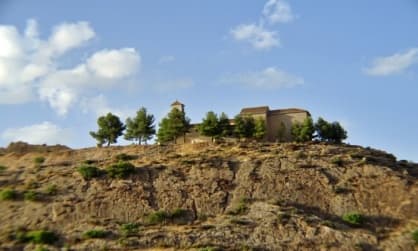
The sanctuary houses one of the oldest hermitages that are still preserved in the town, which has its origin in the 13th century.
Inside the temple is the image of Our Lady of the Rock, patroness saint of the town along with Saint Zeno and the Virgin of Wonders.
Every August 15, its pilgrimage is celebrated in it. The image of the Virgin is transferred to the hermitage of Canara, where the religious service is held afterwards.
Inside the temple is the image of Our Lady of the Rock, patroness saint of the town along with Saint Zeno and the Virgin of Wonders.
Every August 15, its pilgrimage is celebrated in it. The image of the Virgin is transferred to the hermitage of Canara, where the religious service is held afterwards.
Castle Square Porches
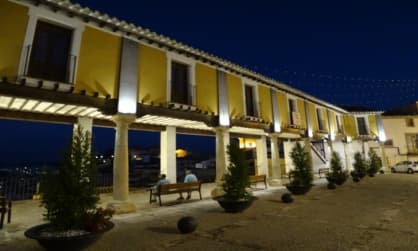
This construction served as a stage for the wealthy families of the time to have a privileged view of the different shows that took place in the square, such as bullfights and religious ceremonies.
Its origins date back to 1725, and currently, its building has been modified and transformed in such a way that it could be used for the economic activities of the region, such as the sale of merchandise.
Its origins date back to 1725, and currently, its building has been modified and transformed in such a way that it could be used for the economic activities of the region, such as the sale of merchandise.
School of Wine
This old winery, dating from the 17th century, is currently reconditioned and functions as a cultural space and meeting point for wine lovers.
Originally in the place was the “La Tercia” House, a property restored by the municipality to give rise to a new space where it is possible to enjoy and learn not only about oenology, but also about gastronomy and culture.
Originally in the place was the “La Tercia” House, a property restored by the municipality to give rise to a new space where it is possible to enjoy and learn not only about oenology, but also about gastronomy and culture.
Caravaca Gate

This is an opening that is part of the few preserved remains of the old wall that protected the city during the Middle Ages.
Its construction is attributed to the Hispanic-Muslim culture and, although it is not certain, it is believed that it dates from the 12th century.
The emblematic gate is oriented towards the old path that led to the neighbouring city of Caravaca de la Cruz—hence, its name.
Its construction is attributed to the Hispanic-Muslim culture and, although it is not certain, it is believed that it dates from the 12th century.
The emblematic gate is oriented towards the old path that led to the neighbouring city of Caravaca de la Cruz—hence, its name.
Hospital of the Royal Piety

Founded in 1891, the building is made up of a total of three sections. It has functioned since its creation as a shelter for the most needy.
Thanks to its great reputation, it serves people from all over the region of Murcia.
Towards the middle of the 20th century, several reforms were carried out, including the expansion of its building, to obtain improvements in capacity and the services provided.
Thanks to its great reputation, it serves people from all over the region of Murcia.
Towards the middle of the 20th century, several reforms were carried out, including the expansion of its building, to obtain improvements in capacity and the services provided.
Roman Arch

Formerly, the city of Begastri had a Roman aqueduct that made it easier to obtain water from the mountains.
With the original archaeological remains found of this aqueduct, this architectural work was carried out, simulating being one of the old arches that were part of the original aqueduct. It is 9 meters high and 5 meters wide, and at its base is a cistern surrounded by vegetation that gives it an aspect of closeness to nature.
With the original archaeological remains found of this aqueduct, this architectural work was carried out, simulating being one of the old arches that were part of the original aqueduct. It is 9 meters high and 5 meters wide, and at its base is a cistern surrounded by vegetation that gives it an aspect of closeness to nature.
Begastri Archaeological Park
This is an archaeological site that houses the ruins of ancient civilizations of Roman, Visigothic, and Iberian origin, located in what is known as “Cabezo Roenas”.
Its top is surrounded by a solid Roman wall with towers and in which are three of its gates, which until now are all those that have been discovered.
Its top is surrounded by a solid Roman wall with towers and in which are three of its gates, which until now are all those that have been discovered.
Church of Saint Anthony of Padua
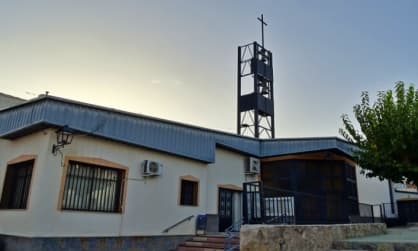
This is a modern-style church that offers a dedication to the saint of the same name.
Its simple but striking structure is not based on conventional church buildings throughout history.
From the outside, its dark ceiling and modern double-story open bell tower, made of black iron structures that rise above the main entrance, attracts attention.
Its simple but striking structure is not based on conventional church buildings throughout history.
From the outside, its dark ceiling and modern double-story open bell tower, made of black iron structures that rise above the main entrance, attracts attention.
What to see in the Noroeste region












